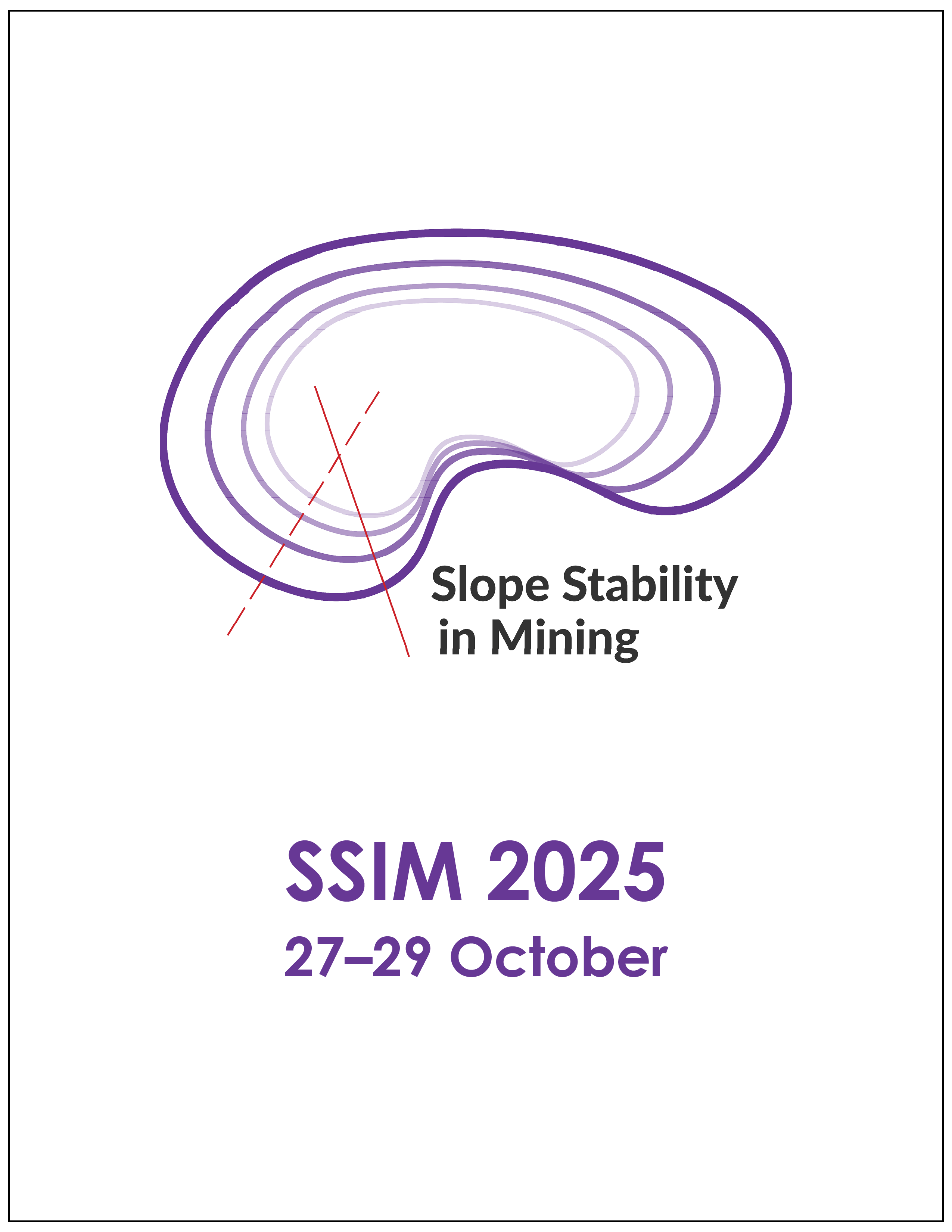Assessing rockfall retention strategies using field-calibrated rockfall modelling

|
Authors: Restrepo, J; McNabb, JC; Potter, JJ; Warren, S; Ryan, T; Luxbacher, K |
DOI https://doi.org/10.36487/ACG_repo/2535_10
Cite As:
Restrepo, J, McNabb, JC, Potter, JJ, Warren, S, Ryan, T & Luxbacher, K 2025, 'Assessing rockfall retention strategies using field-calibrated rockfall modelling', in JJ Potter & J Wesseloo (eds), SSIM 2025: Fourth International Slope Stability in Mining Conference, Australian Centre for Geomechanics, Perth, https://doi.org/10.36487/ACG_repo/2535_10
Abstract:
This study extends a previously calibrated rockfall model developed using field data from full-scale tests on a single bench. The original model, based on RocFall2 simulations and using six-inch synthetic concrete blocks, was calibrated to match observed behaviour. It achieved 90% rock retention within 10.9 m from the bench toe. When the Modified Ritchie Criterion was applied, the resulting 9.4 m bench width produced approximately 80% retention at the first bench, with full containment achieved by the sixth. In this second phase, the calibrated model was used to evaluate the effectiveness of integrating energyabsorbing barriers with reduced-width catch benches. A total of 24 two-dimensional simulations were conducted, combining four bench widths, three barrier setback distances, and two barrier heights. Each simulation recorded the percentage of rocks retained before reaching the barrier, intercepted by the barrier, and those that passed beyond the system. The results show that optimised barrier configurations can compensate for reduced bench width. In several scenarios with bench widths as narrow as 5.2 m, near-complete rockfall containment was achieved. Barriers placed closer to the bench crest and constructed at greater heights consistently improved performance. The best-performing setups retained over 99% of rocks through a combination of effective bench designs and barrier placements. In addition to improving safety, the use of barriers provides increased flexibility in pit design. By enabling steeper slopes and narrower benches without compromising rockfall control, barrier systems allow deeper ore recovery and improved overall pit economics. This study offers quantitative evidence supporting the application of barriers as an efficient and practical solution for rockfall mitigation in open pit mines.
Keywords: rockfall, barriers, catch benches, retention performance, modelling simulation
References:
Bar, N, Nicoll, S & Pothitos, F 2016, ‘Rock fall trajectory field testing, model simulations and considerations for steep slope design in hard rock’, APSSIM 2016: Proceedings of the First Asia Pacific Slope Stability in Mining Conference, Australian Centre for Geomechanics, Perth, pp. 457–466,
Bourgeois, J, Warren, S & Armstrong, J 2023, ‘Utilization of statistical analysis to identify influential slope parameters associated with rockfall at open pit mines’, Mining, Metallurgy & Exploration, vol. 40, pp. 1101–1112,
Buzzi, O, Spadari, M, Giacomini, A, Fityus, S & Sloan, SW 2013, ‘Experimental testing of rockfall barriers designed for the low range of impact energy’, Rock Mechanics and Rock Engineering, vol. 46, pp. 701–712,
Castanon-Jano, L, Blanco-Fernandez, E, Castro-Fresno, D & Ballester-Muñoz, F 2017, ‘Energy dissipating devices in falling rock protection barriers’, Rock Mechanics and Rock Engineering, vol. 50, pp. 603–619,
Federal Highway Administration, Central Federal Lands Highway Division 2011, Context Sensitive Rock Slope Design Solutions, Lakewood.
Fonseca, L, Wagner, D & Boričević, M 2024, ‘Technological advances in rockfall protection in open pits high speed impacts with spin’, Rudarstvo i Geologija Danas, pp. 109–124,
Macciotta, R, Creighton, A & Martin, CD 2020, ‘Design acceptance criteria for operating open-pit slopes: an update’, CIM Journal, vol. 11, no. 4, pp. 248–265,
Marchelli, M, Peila, D & Giacomini, A 2023, ‘Rockfall in open pit mines: management of the pit geometry and protection measures design’, International Journal of Rock Mechanics and Mining Sciences, vol. 170,
Meyer Nagera, B 2022, Bench Design Workflow Analysis and Acceptance Criteria in Open Pit Mines, MEng Report, University of Alberta, Edmonton.
Restrepo, J, McNabb, J, Potter, J, Warren, S, Ryan, T & Luxbacher, K 2025, ‘Forecasting rockfall retention performance of catch bench configurations in mining models calibrated to rockfall field data’, paper presented at ARMA, Santa Fe.
Rocscience Inc 2024, RocFall2, computer software, version 8.025, Toronto.
Warren, SN, Bourgeois, J, Sbai, S & Lasich, T 2024, ‘Revisiting rockfall catch bench design guidelines: test results from Bald Mountain Mine, NV, USA’, paper presented at Slope Stability, Belo Horizonte.
© Copyright 2025, Australian Centre for Geomechanics (ACG), The University of Western Australia. All rights reserved.
View copyright/legal information
Please direct any queries or error reports to repository-acg@uwa.edu.au
View copyright/legal information
Please direct any queries or error reports to repository-acg@uwa.edu.au

